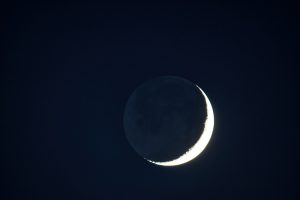Another sighting of Noctilucent Cloud or night shining cloud by member Sonia on the 12th July 2022. Photos taken using an iPhone. Looking North East.
NLC at 3.27am
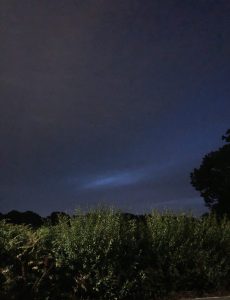
NLC at 3.32am
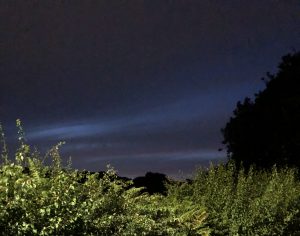
Astronomy every Thursday
Another sighting of Noctilucent Cloud or night shining cloud by member Sonia on the 12th July 2022. Photos taken using an iPhone. Looking North East.
NLC at 3.27am

NLC at 3.32am

Member Simon Dawes imaged our Sun on the morning of the 11th July 2022 and as you can see the Sun is very active. Details of how Simon acquired the images are on the photos.
NEVER LOOK AT THE SUN DIRECTLY. Please click here for solar observing safely.
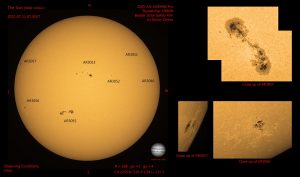
Sunspot AR3053
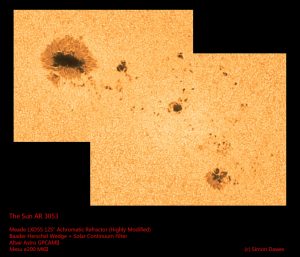
Sunspot AR3055 - stretching more than 100,000 km from end to end with more than a dozen dark cores. Simon said 'AR3055 its seems to be getting longer as I couldn't get it in the frame so had to do a composite.'
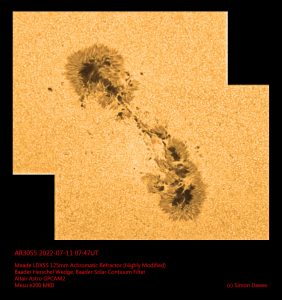
Sunspot AR3056
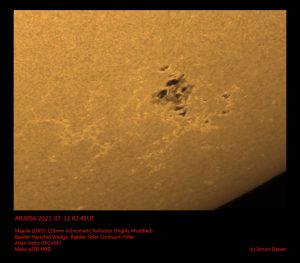
New Sunspot - this new active region was just peeping round the limb of the Sun on the 11th July. Now Sunspot AR3057
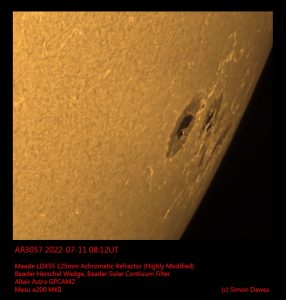
Two more sets of observations for the ExoClock project by Simon Dawes. Exoplanets XO-1b & Qatar-10b.
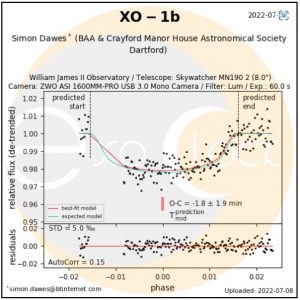
XO-1b is an exoplanet approximately 536 light-years away in the constellation of Corona Borealis. The planet was discovered orbiting the yellow dwarf star now designated XO-1 in 2006. The planet XO-1b is named Negoiu. The name was selected in the NameExoWorlds campaign during the 100th anniversary of the IAU. Negoiu is the second highest peak in Romania. It is a little bit larger than Jupiter. It is a hot Jupiter.
The XO Project team employed the relatively inexpensive XO Telescope, made from commercial equipment, to search for exoplanets. This telescope is on the Hawaiian Island of Maui.
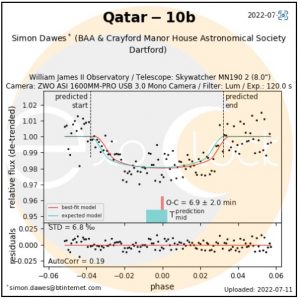
Qatar-10 b is a gas giant exoplanet orbiting an F-type star. Its mass is 3/4 that of Jupiter and takes 1.6 days to complete one orbit. It is 0.0286 AU from its parent star. Discovered in 2019.
Member Stephen Cohen spotted something quite rare in the sky at midday on the 11th July 2022 over Cumbria - A 22° Solar Halo with an added Circumscribed Halo around that. Unusual to see in the UK so well spotted Stephen!
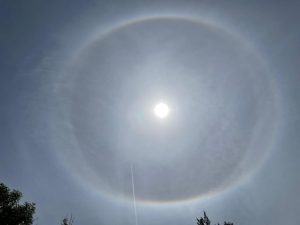
Well what a sight! Four planets, the ISS and Noctilucent Cloud that just kept giving.......
At 2.32am an alert went out to members via WhatsApp from member Sonia who had spotted the NLC developing in the North East.
Several members picked up the alert and so too got to witness & photograph a fantastic NLC spectacle which lasted a long time into dawn. The last photograph taken was at 4.05am! The planets Venus, Mars, Jupiter & Saturn (which was in the South) where photographed with the NLC too. Then starting at 3.08am there was a bright ISS pass overhead.
Spaceweather.com wrote ''This morning, sky watchers in Europe woke up to some of the brightest noctilucent clouds (NLCs) in years. The clouds were amazingly bright and remained very evident deep into dawn. The clouds didn't stop there. They spread south across Europe, backlighting the Eiffel Tower and completely filling skies in places where, normally, NLCs are confined to a thin band near the horizon.''
Below are a selection of stunning photos taken by members , Honor Wheeler, Jim Burchell, Diane Clarke, John Howarth and Sonia - all from North West Kent.
Four images of the NLC on the 6th July 2022 taken by Honor Wheeler.
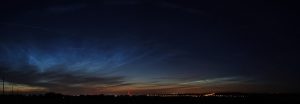
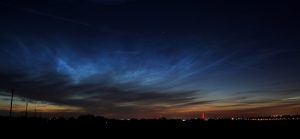
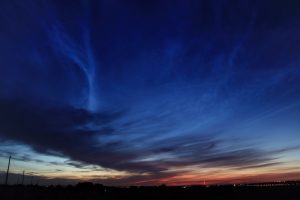
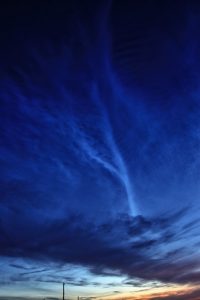
Three images of the NLC on the 6th July 2022 taken by Jim Burchell.
NLC with Venus at 3.30am
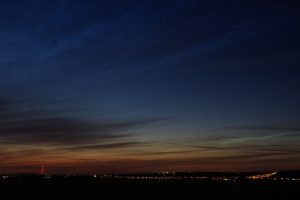
NLC at 3.45am
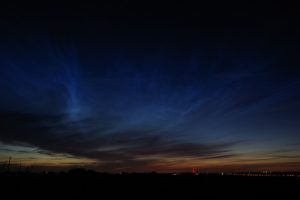
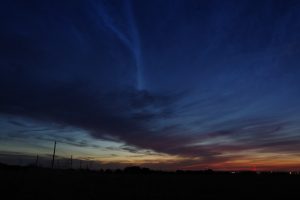
Three images of the NLC on the 6th July 2022 taken by Diane Clarke.
Diane said 'Again following a message from fellow member Sonia, I set up my equipment and watched in fervent hope that the NLC would develop, as there is always the possibility that they will dissipate shortly after becoming visible.
The 1st image is a panorama created from 6 frames as the entire NLC was spread out over a large portion of the N-NE sky, that a panoramic view was the only option to encompass the majestic splendour on display.
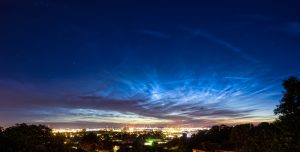
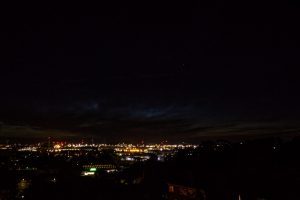

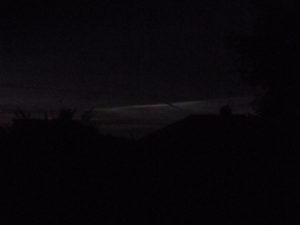
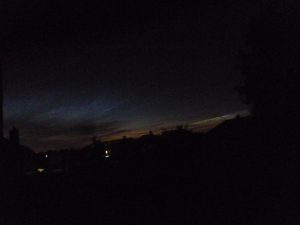
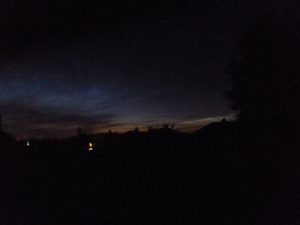
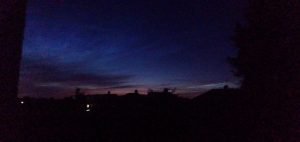
Images by taken by Sonia using an iPhone of the NLC, ISS and Planets on 6th July 2022.
NLC developing in the North East at 2.46am. You can also see the star Capella.
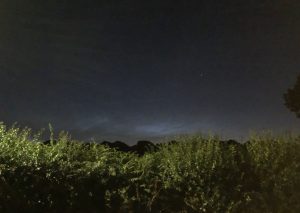
NLC at 2.56am. Getting brighter & higher.
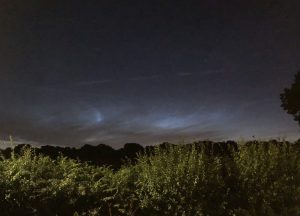
NLC at 3.03am with Capella.
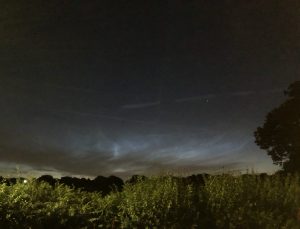
The ISS appearing in the West at 3.08am.
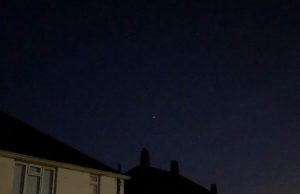
NLC continuing to develop and spread with Capella at 3.15am.
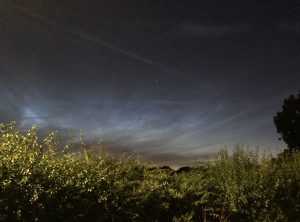
NLC at 3.24am
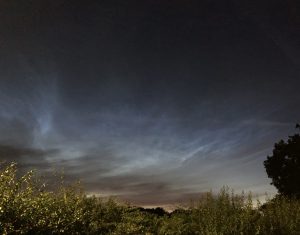
NLC at 3.26am
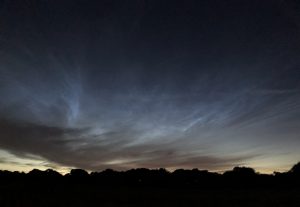
NLC and Mars in the East at 3.36am.
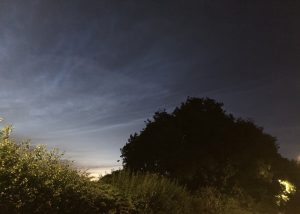
NLC with Mars & Jupiter in the East at 3.42am.
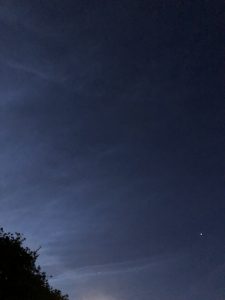
NLC at 3.45am nearly overhead.
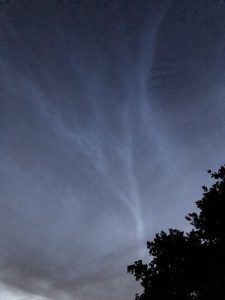
NLC directly overhead at 3.48am.
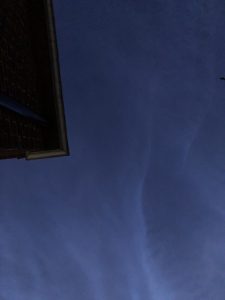
NLC at 3.49am spreading overhead. Saturn can be seen bottom right in the image, which was in the South.
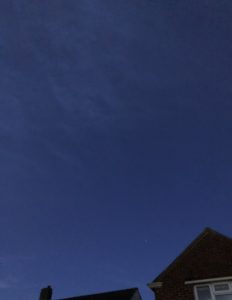
Well they just keep coming - more NLC albeit very faint spotted at 3am on the 8th July 2022 by member Honor Wheeler who sent the alert out to members. As the NLC were faint to the naked eye members were willing them to get bigger and brighter but alas just a small patch is all that developed that morning.
Below are a selection of photos taken by members who responded to the alert. All photos taken from North West Kent.
NLC by Honor Wheeler - The faint NLC are middle left.
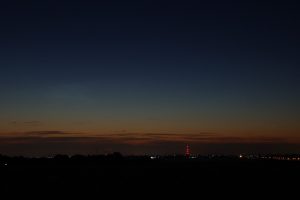
NLC by Jim Burchell taken with a Pentax K70 - The faint NLC are middle left.
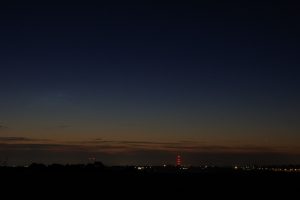
NLC by Jim Burchell - The NLC are centre left in this image.
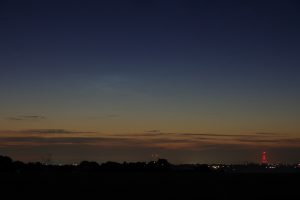
NLC by Diane Clarke

NLC at 3.30am. A white whispy patch of NLC can just be seen in the centre of the photo. They are 7 O'Clock from the star Capella which is in the photo. Photo taken using an iPhone by member Sonia.
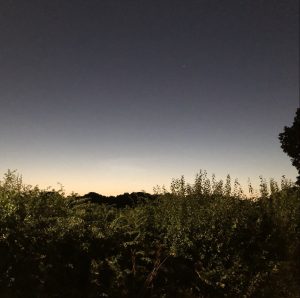
Member Simon Dawes captured some superb images of the Sun this morning. The Sun is quite active at the moment with several sunspots.
Details of how Simon took the images are on the photos.
NEVER LOOK AT THE SUN DIRECTLY. Please click here for solar observing safely.
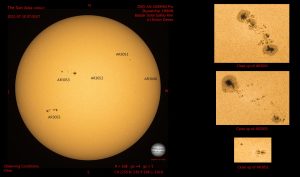
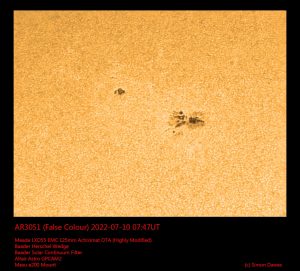
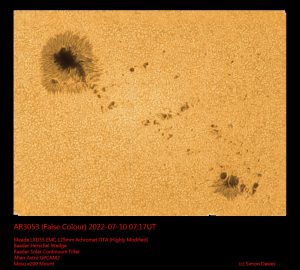
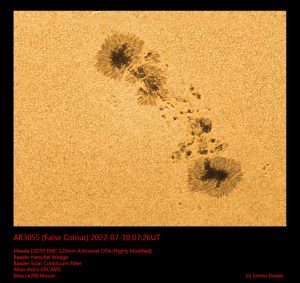
A lovely composite image (8 frames) of the Moon taken last night 9th July 2022 by member Neil Webster: Waxing Gibbous, 75%, 9.88 days old.
Neil wrote 'Not the easiest shoot as it was low down and the heat created a lot of atmospheric turbulence.'
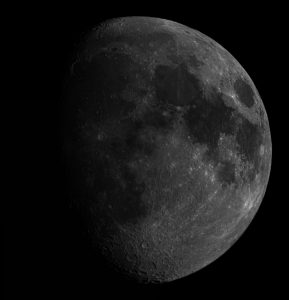
Check out Neil's Flickr page at https://www.flickr.com/photos/137388222@N05/
On the 5th July 2022 Noctilucent Cloud were spotted again. They lasted from 2.25am until 3.40am and were in the NE to NNE direction.
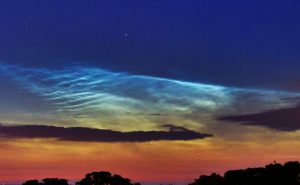
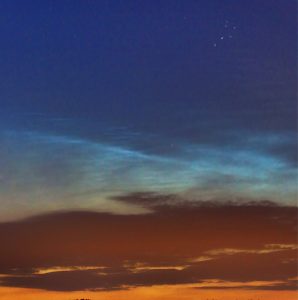
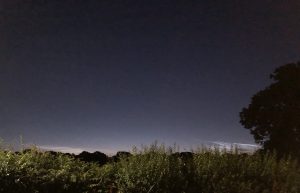
Several members took the opportunity to photograph the waxing crescent Moon on the evening of 2nd June 2022 - The Queen's Platinum Jubilee Day and some stunning shots were acquired.
Neil Webster's Jubilee Moon
A composite of three images shot at about 9.20pm before it disappeared behind trees/buildings. It was still very light and the setting Sun was nearby.
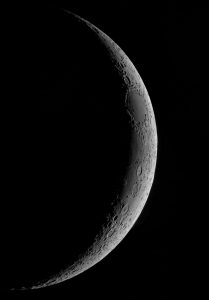
Martin Crow's Jubilee Moon & Beacon
Taken from Burnham On Crouch, Essex.
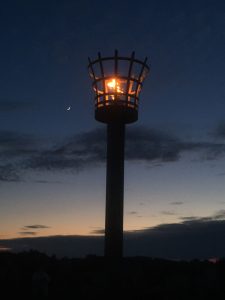
John Archer's Jubilee Moon
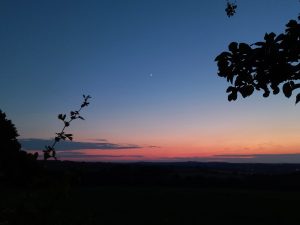
Jim Burchell's Jubilee Moon with Earthshine
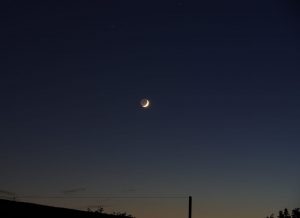
Diane Clarke's Jubilee Moon with Earthshine
